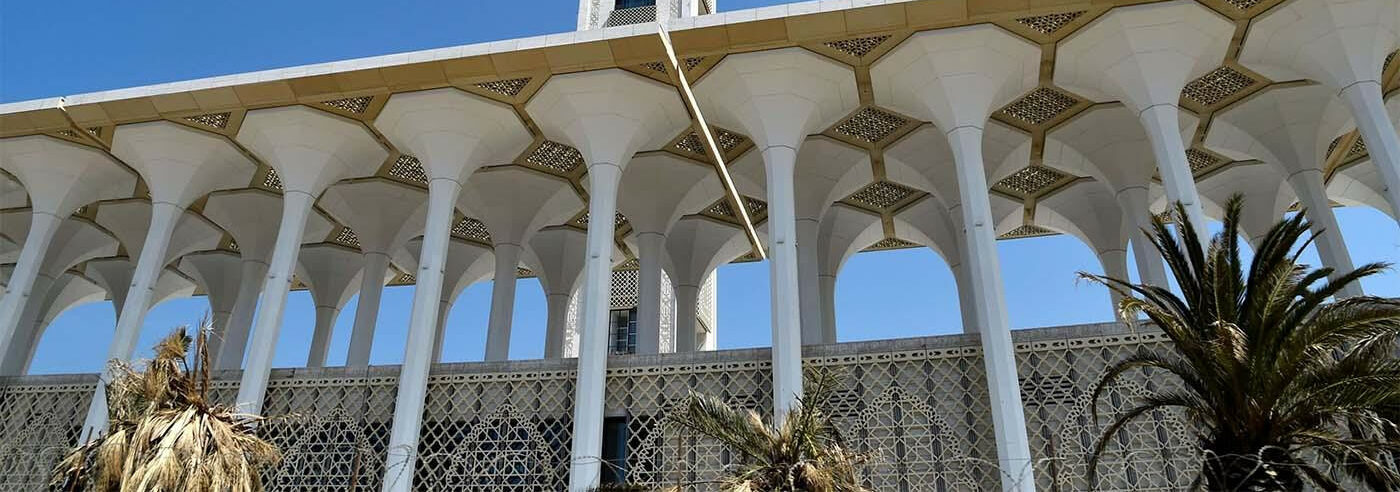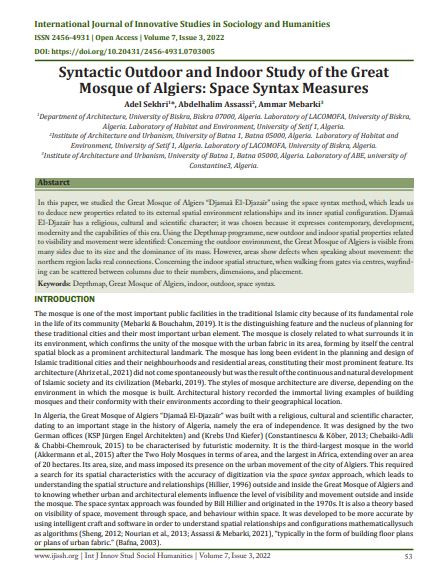

In this paper, we studied the Great Mosque of Algiers “Djamaâ El-Djazaïr” using the space syntax method, which leads usto deduce new properties related to its external spatial environment relationships and its inner spatial configuration. DjamaâEl-Djazaïr has a religious, cultural and scientific character; it was chosen because it expresses contemporary, development,modernity and the capabilities of this era. Using the Depthmap programme, new outdoor and indoor spatial properties relatedto visibility and movement were identified: Concerning the outdoor environment, the Great Mosque of Algiers is visible frommany sides due to its size and the dominance of its mass. However, areas show defects when speaking about movement: thenorthern region lacks real connections. Concerning the indoor spatial structure, when walking from gates via centres, wayfind-ing can be scattered between columns due to their numbers, dimensions, and placement.
Adel, Sekhri, Abdelhalim Assassi, Ammar Mebarki, “_Syntactic Outdoor and Indoor Study of the Great Mosque of Algiers”, International Journal of Innovative Studies in Sociology and Humanities, Volume 7, Issue 3, (2020).
I agree to the terms outlined below:
You agree to upload and assign Mosqpedia Database the rights to use the content worldwide and in perpetuity across all current and future media platforms. Mosqpedia Database may edit, copy, adapt and translate your contribution.
The content will be distributed under the Creative Commons Attribution-Deed – Attribution-NonCommercial-NoDerivatives 4.0 International – Creative Commons
All data will be stored in line with data protection regulations.